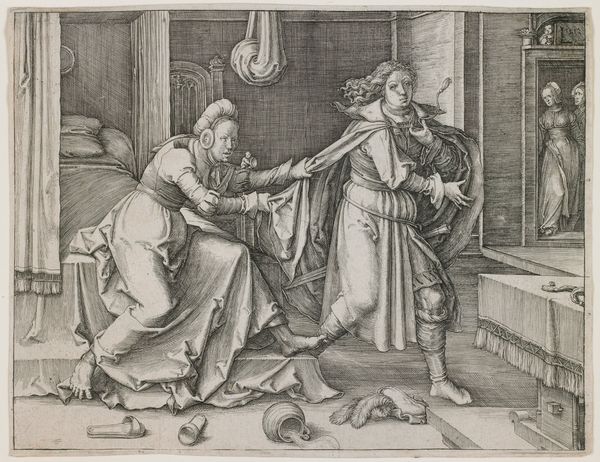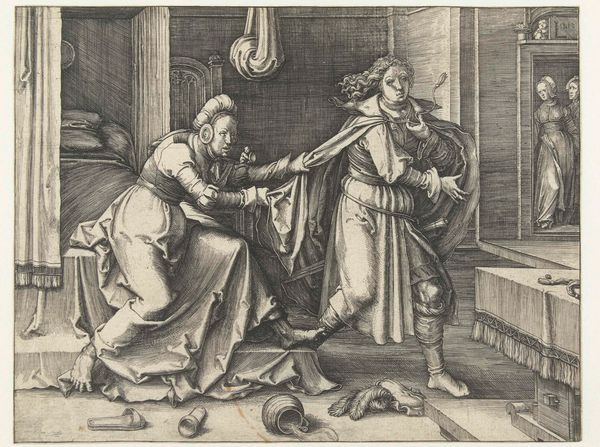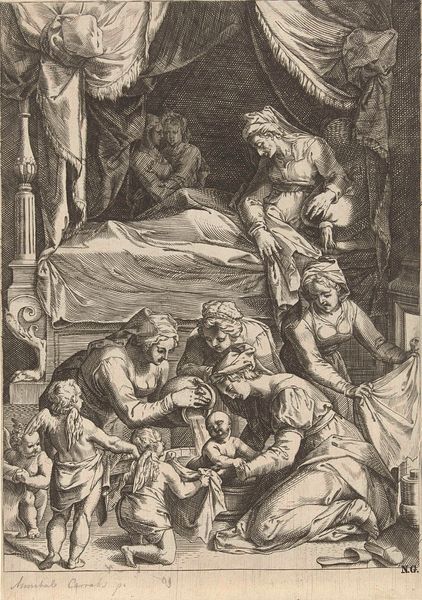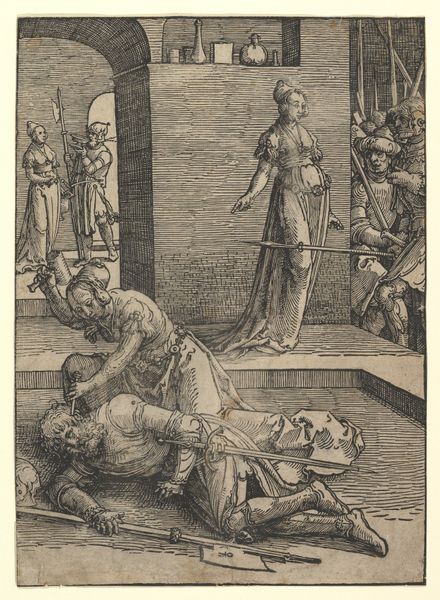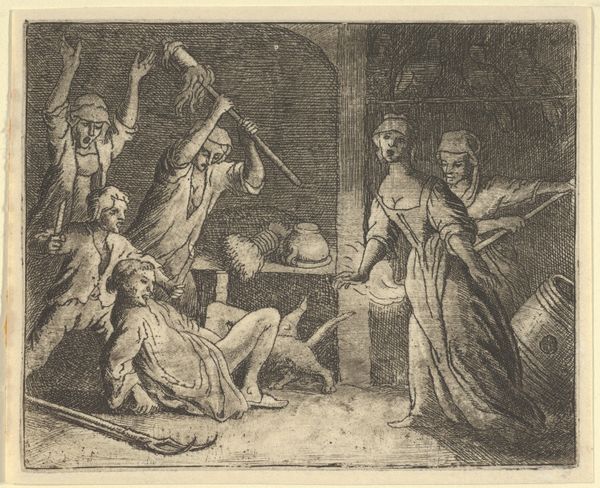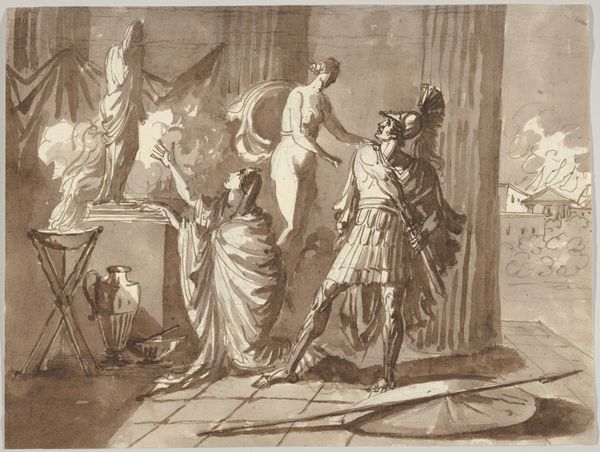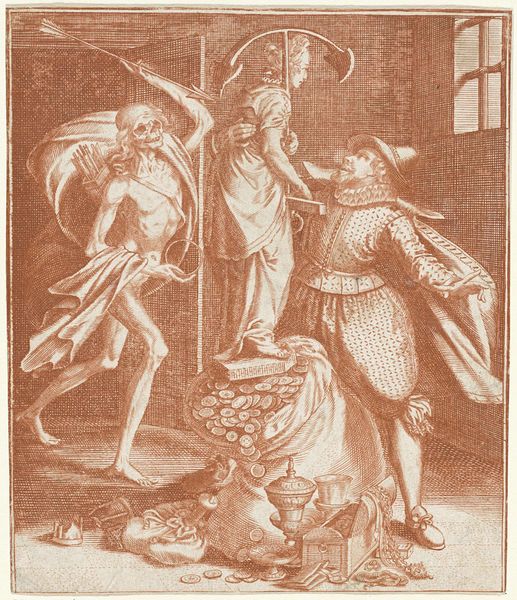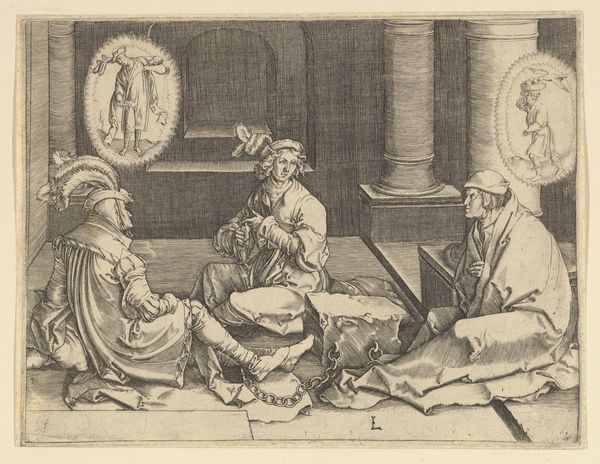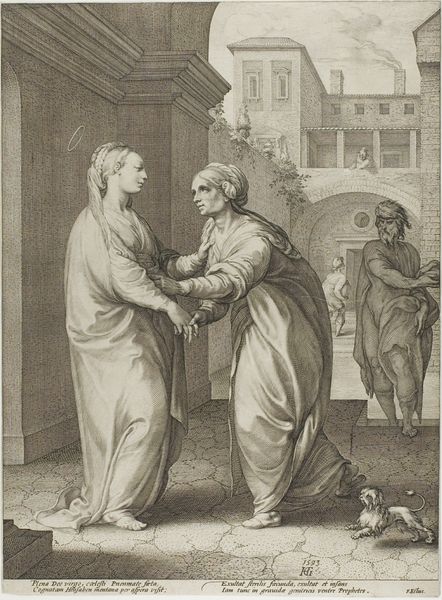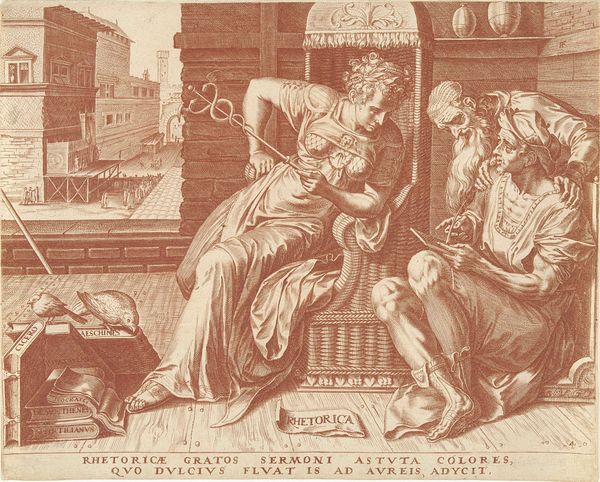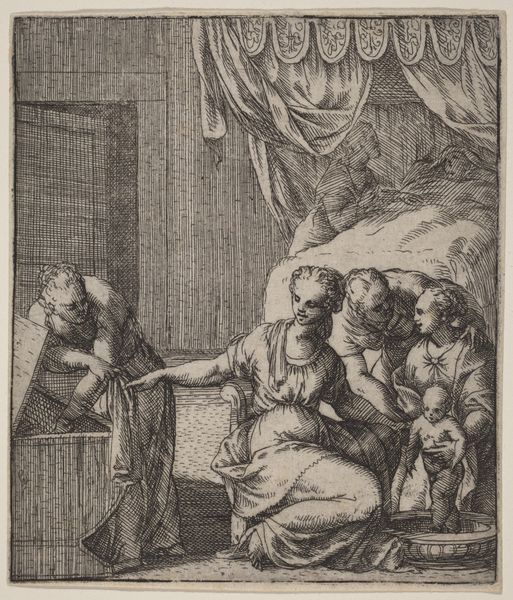
drawing, print, engraving
#
drawing
#
toned paper
#
narrative-art
#
baroque
# print
#
old engraving style
#
figuration
#
men
#
portrait drawing
#
history-painting
#
engraving
Dimensions: sheet: 5 x 6 3/4 in. (12.7 x 17.1 cm)
Copyright: Public Domain
Clement de Jonghe made this copy of Joseph and Potiphar's Wife in the mid-17th century using etching, a printmaking technique prized for its precision. The etcher coated a metal plate with wax, then scratched an image into the wax, exposing the metal. Immersing the plate in acid, the drawn lines are eaten into the surface. This creates grooves that hold ink, which when pressed onto paper, transfers the image. Looking closely, you'll see the network of fine lines, which create the scene's details and tonal variations. The material properties of the metal plate allow for a high level of detail, capturing the drama of the biblical scene. The etching process enables the reproduction of images, making art accessible to a wider audience, thereby democratizing art, detaching it from unique "masterpieces." By valuing the artistry embedded in the printmaking process, we challenge traditional hierarchies and gain a fuller appreciation of its artistic and cultural significance.
Comments
No comments
Be the first to comment and join the conversation on the ultimate creative platform.
